What Is GIS In Surveying | Definitions of GIS | Parts & Work Flow of GIS | Advantages of GIS
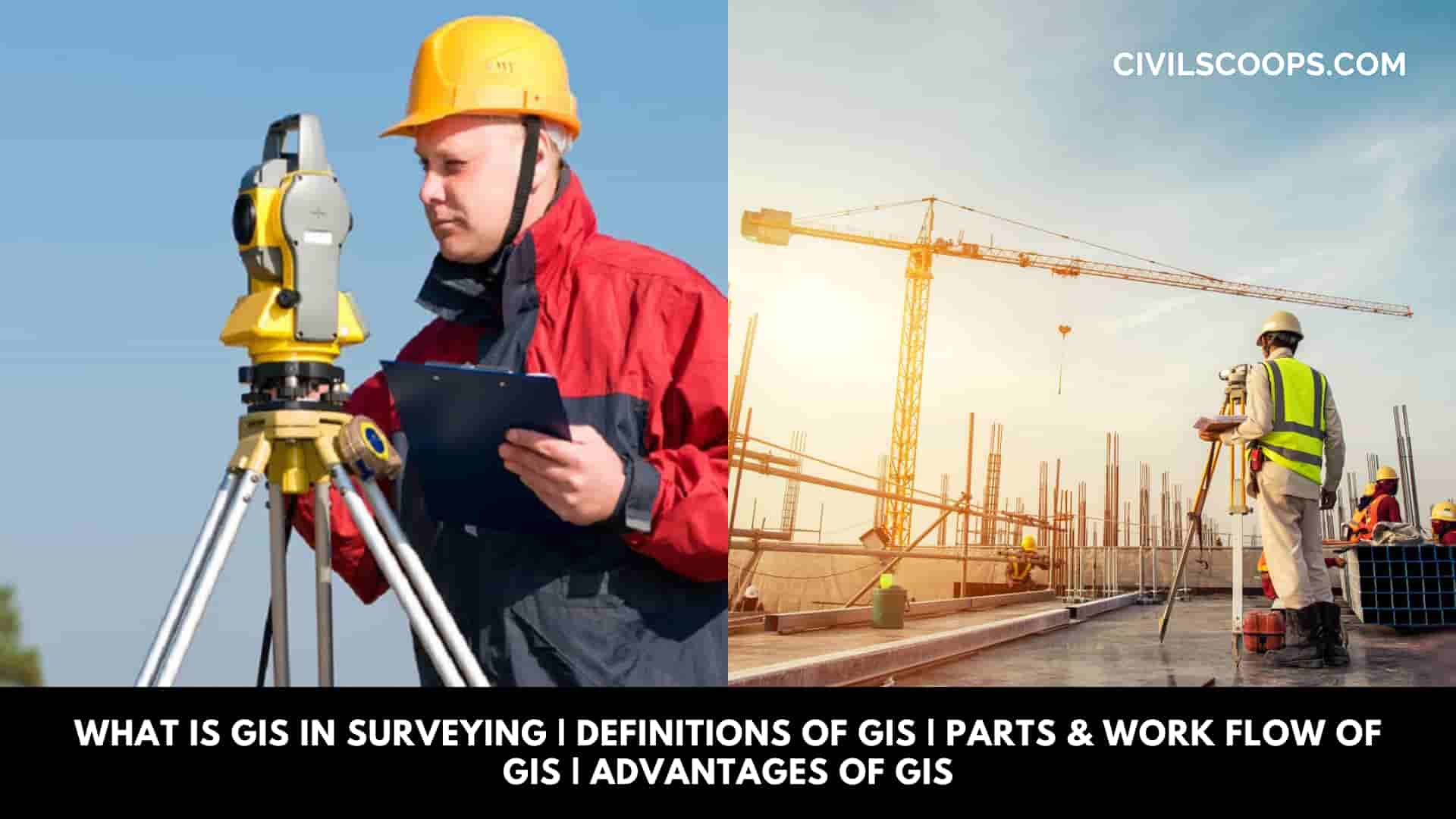
Table of Contents
What Is GIS In Surveying?
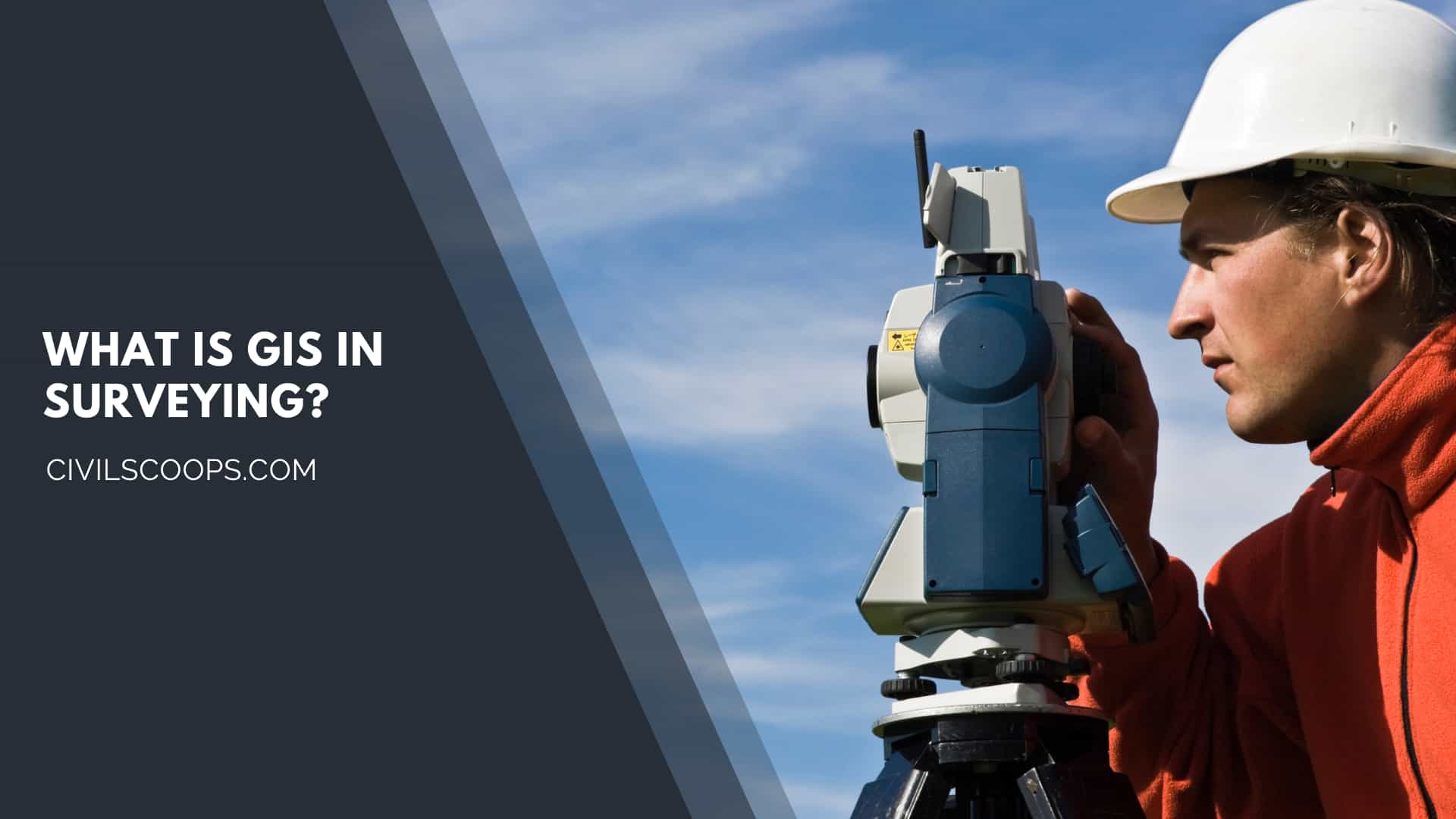
GIS stands for a geographic information system. An information system is a computer program that manages data. A GIS is a type of information system that deals specifically with geographic or spatial information.
GIS is a fastly growing technological field that incorporates graphical features with tabular data in order to assess real-world problems.
History of GIS

The GIS began to develop in the 1960s, with the discovery that maps should be programmed using simple code and then stored in the computer, allowing future modification when necessary.
This was a marvelous change from the era of hand cartography when maps had to be created by hand. The earliest version of a GIS was known as computer cartography, also involved simple linework in representing land features.
Concept of GIS
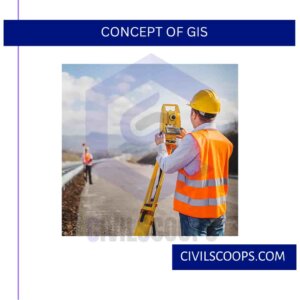
Concept of overlaying different mapped features on top of each other to determine patterns and causes of spatial phenomena. The capabilities of GIS have been known from simple beginnings.
The capabilities of GIS have been known from the simple beginnings of computer cartography. At the simplest level, GIS may be thought of as a high-tech equivalent of a map.
Paper maps cannot be produced for quicker and more effective storage of data. An easily accessible digital format of maps in GIS enables complex analysis and modeling of data, which was previously not possible with paper maps.
The reach of GIS expands in all disciplines and has been used for a wide range of problems, such as prioritizing sensitive species habitat and determining optimal real-estate locations for new businesses.
Also Read: Benchmark in Surveying | TBM in Surveying | GTS Benchmark| Permanent Benchmark | Arbitrary Benchmark
Different Definitions of GIS Given by Various
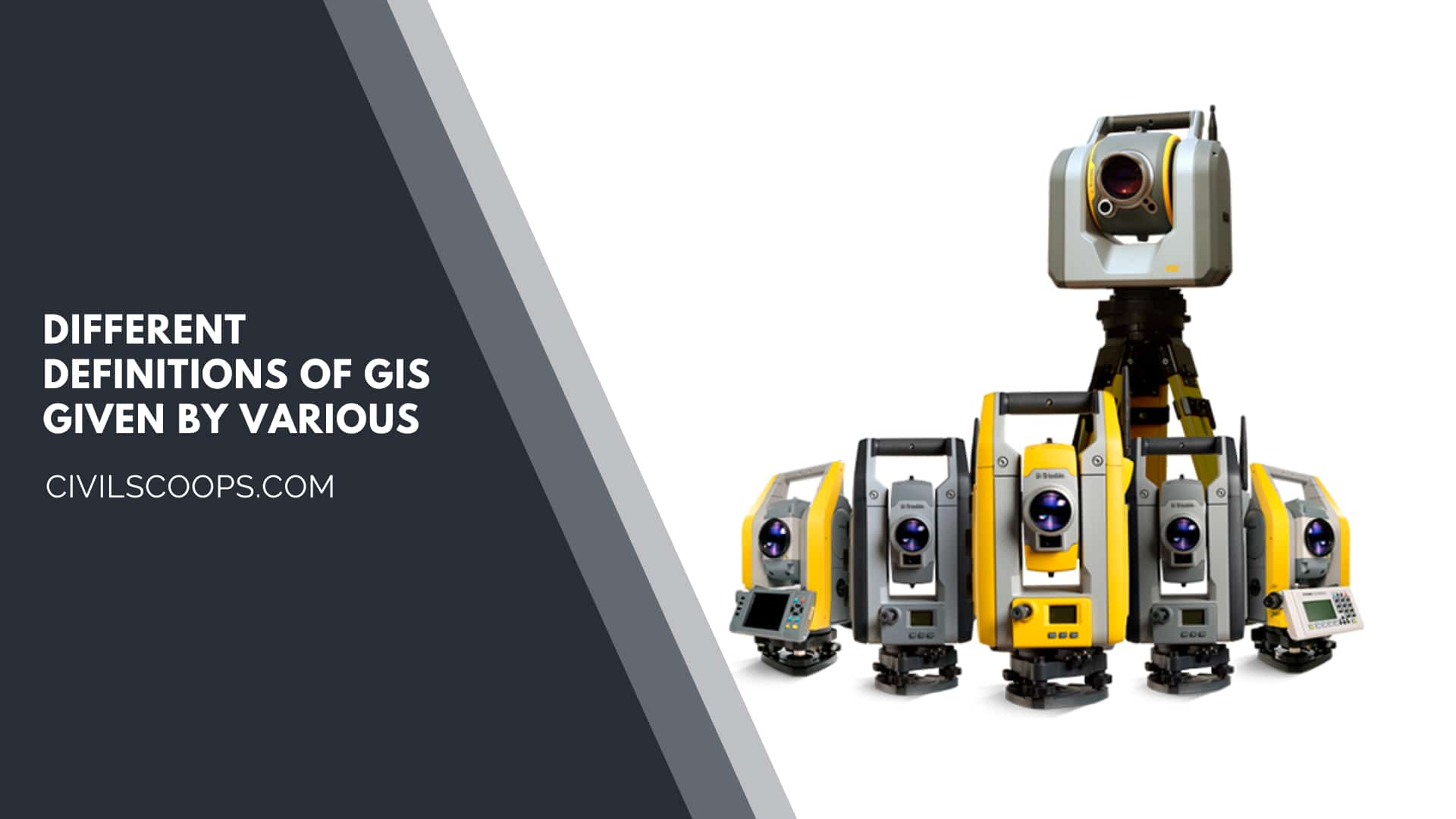
1). The Geographic Information System, generally referred to as a GIS, is an integrated set of software and hardware tools used for the manipulation and management of digital spatial (geographic) and related attribute data.
2). The Geographic Information System (GIS) is a computer-based tool for analyzing and mapping things that exist and events that happen on Earth. GIS technology uses common database operations such as statistical and query analysis with the unique visualization and geographic analysis benefits offered by maps.
3). The Geographic Information System (GIS) is an integrated system of computer software, hardware, and trained personnel linking demographic, utility, topographic, facility, image, and other resource data that is geographically referenced.
4). The Geographic Information System (GIS) is a computer-based information system that enables capture, modeling, manipulation, retrieval, analysis and
Parts of GIS
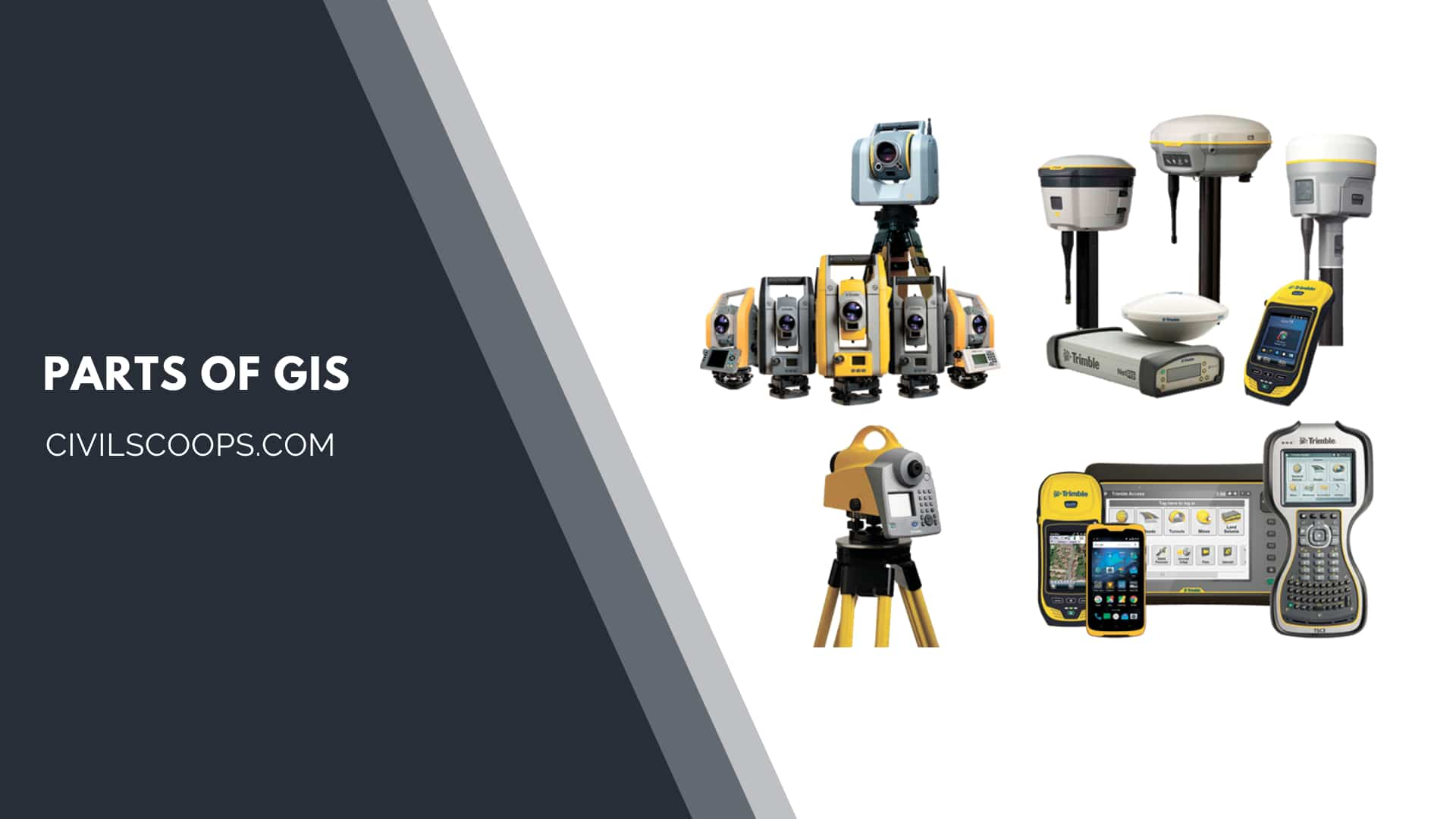
An operational Geographic Information System (GIS) also has a series of components that combine to make the system work. GIS has five important components, computer hardware, sets of application software modules, required data, people who manage the system and develops plans, and a well-designed implementation method.
These components are critical to successful GIS. A working GIS integrates the following five key components:
- Hardware
- Software
- Data
- People
- Methods
GIS Work Flow
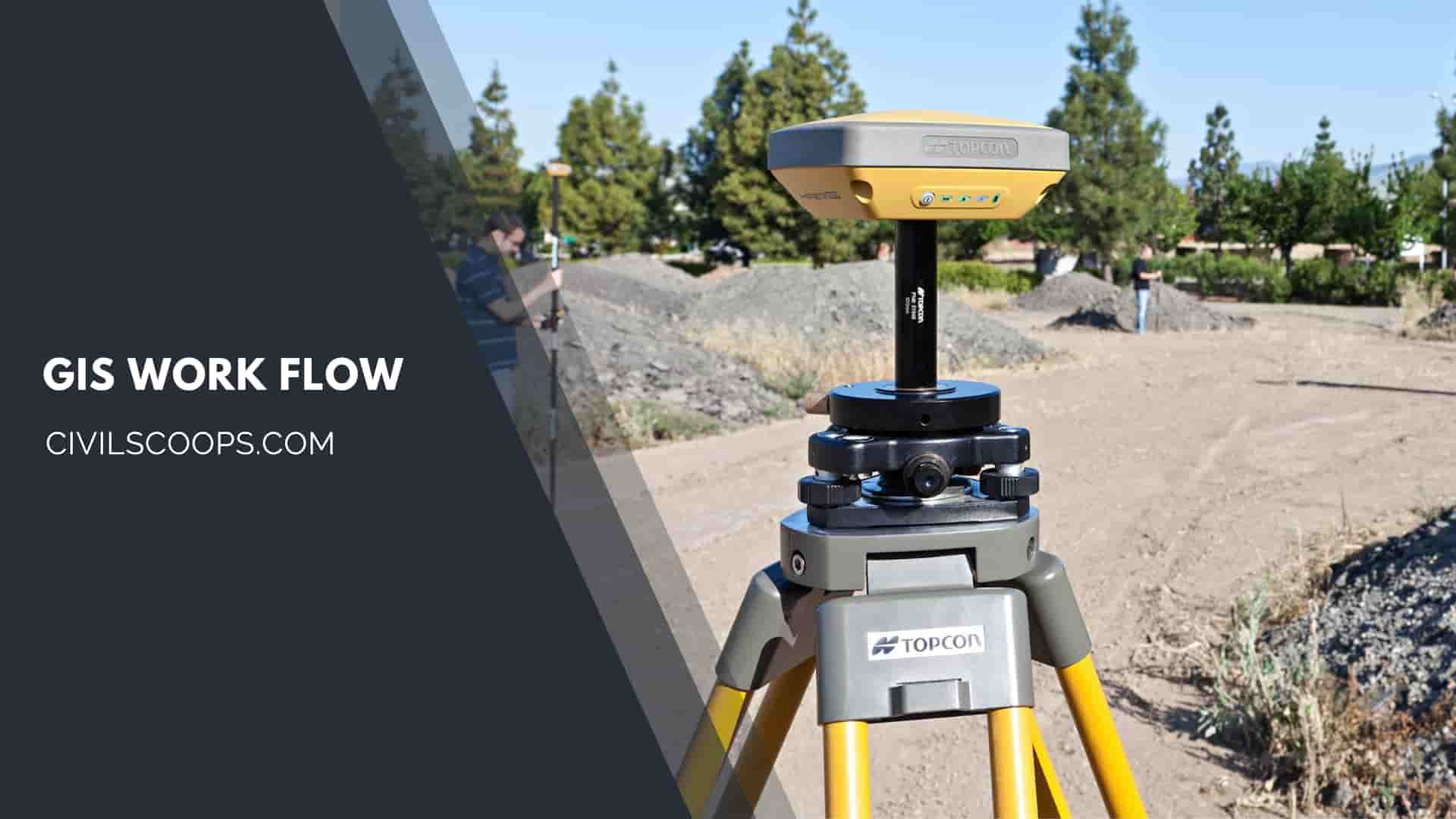
The five essential elements that define a GIS are data acquisition, data preprocessing, data management, data manipulation and analysis, and product generation (output).
The above elements are in a continuous flow process in a GIS as in as below fig Data acquisition is the process of identifying and collecting the data required for a given application.
It includes locating and acquiring existing data such as aerial maps, ground maps, images from photogrammetry, and images gathered using remote sensing.
Data preprocessing operations, which are concerned with storage and retrieval of data, are associated with receiving data into the system by manual digitizing, scanning, keyboard entry of attributes, and online retrieval from other databases.
Database management governs the creation of access to the database itself. It provides an easy and consistent method for data envy, updating data, deletion of data, and retrieval of data.
A modem Database Management System is usually used for the creation of a GIS database. Storage and retrieval mechanisms include the control of the physical storage of the data in memory and its retrieval for the needs of the other components.
The data manipulation and analysis include:
- Classification and aggregation,
- Geometric operations such as rotation, translation, scaling, rectification, and registration,
- Controlled determination,
- Data structure conversion,
- Spatial operations of connectivity and neighborhood operations,
- Measurement of distance and direction,
- Statistical analysis as descriptive statistics regression, correlation, and crosstabulation, and
- Modeling.
These elements represent the whole spectrum of techniques available for the transformation of the digital model by mathematical means.
Product generation is the phase where final outputs from the GIS are created. These output products include statistical reports, maps, and graphics of various kinds.
Also Read: Difference Between Plane Surveying and Geodetic Surveying
Advantages of GIS

The advantages of using the Geographic Information System (GIS) include:
- Decisions are made easier because specific also detailed information is presented about one or more locations.
- Especially regarding maintenance schedules, fleet movements, or scheduling timetables.
- Improved communication between any involved organizations or departments as the visual format is easily understood by all.
- Geographical changes are easily recorded by GIS for those responsible for recording the changes.
- Knowing what is and shall be occurring in geographic space in order to plan a course of action.
[su_box title=”FAQ” style=”default” box_color=”#333333″ title_color=”#FFFFFF” radius=”3″ class=”” id=””]
What Is Gis in Surveying?
A Geographic Information System (GIS) is a computer system that analyzes and displays geographically referenced information. It uses data that is attached to a unique location.
What Is a Gis Survey?
Geographic information system (GIS) surveys create a central location to collect data and analysis, which is critical for modern planning, surveying and construction services. With GIS, professional land surveyors can increase survey accuracy while reducing costs.
History of Gis
GIS in surveying has evolved over time, starting with the emergence of computer-aided drafting systems in the 1960s and 1970s. The integration of GPS technology in the 1980s revolutionized surveying practices, and the subsequent integration of GPS with GIS software streamlined data collection processes. The rise of web-based and mobile GIS applications further improved data accessibility and collection efficiency.
Concept of Gis
A geographic information system (GIS) is a computer system for capturing, storing, checking, and displaying data related to positions on Earth’s surface. By relating seemingly unrelated data, GIS can help individuals and organizations better understand spatial patterns and relationships.
Parts of Gis
A working GIS integrates five key components: hardware, software, data, people, and methods.
Gis Work Flow
ArcGIS Workflow Manager is a scalable workflow management system that automates and simplifies many aspects of performing and managing GIS and non-GIS work in an organization. It optimizes GIS operations by providing real-time tools for managing people, processes, and products required to complete work.
Advantages of Gis
Surveyors use GIS to manage the entire planning aspect of a surveying project. GIS provides the tools necessary to research, develop, implement, and monitor the progress of a project and manage site location, environmental impact mitiga tion, eco nomic analysis, and other critical facets.
Importance of Gis in Surveying
GIS is vital in surveying as it improves data collection, facilitates spatial analysis, enhances data visualization, supports planning and design processes, and enables effective data management and communication. It empowers surveyors to make informed decisions and provides a comprehensive framework for utilizing spatial information in various surveying applications.
[/su_box]
[su_note note_color=”#F2F2F2 ” text_color=”#333333″ radius=”3″ class=”” id=””]
Like this post? Share it with your friends!
Suggested Read –
- Difference Between Footing and Foundation | What is Footing and Foundation
- How Are Bridges Built | How Are Bridges Constructed | Factors Associated with Building Bridges
- 8 Different Methods of Concrete Crack Repair | How to Select Suitable Method of Concrete Crack Repair
- Waterproof a Concrete Roof | Old Concrete Roof Waterproofing | Concrete Roof Sealant Flat Concrete Roof Waterproofing
- Plinth Area Meaning | Plinth Area Definition | What Is Plinth Area | Plinth Area Rate | Plinth Area Estimate | How to Calculate Plinth Area of a Flat
[/su_note]
Originally posted 2023-06-09 06:02:44.
